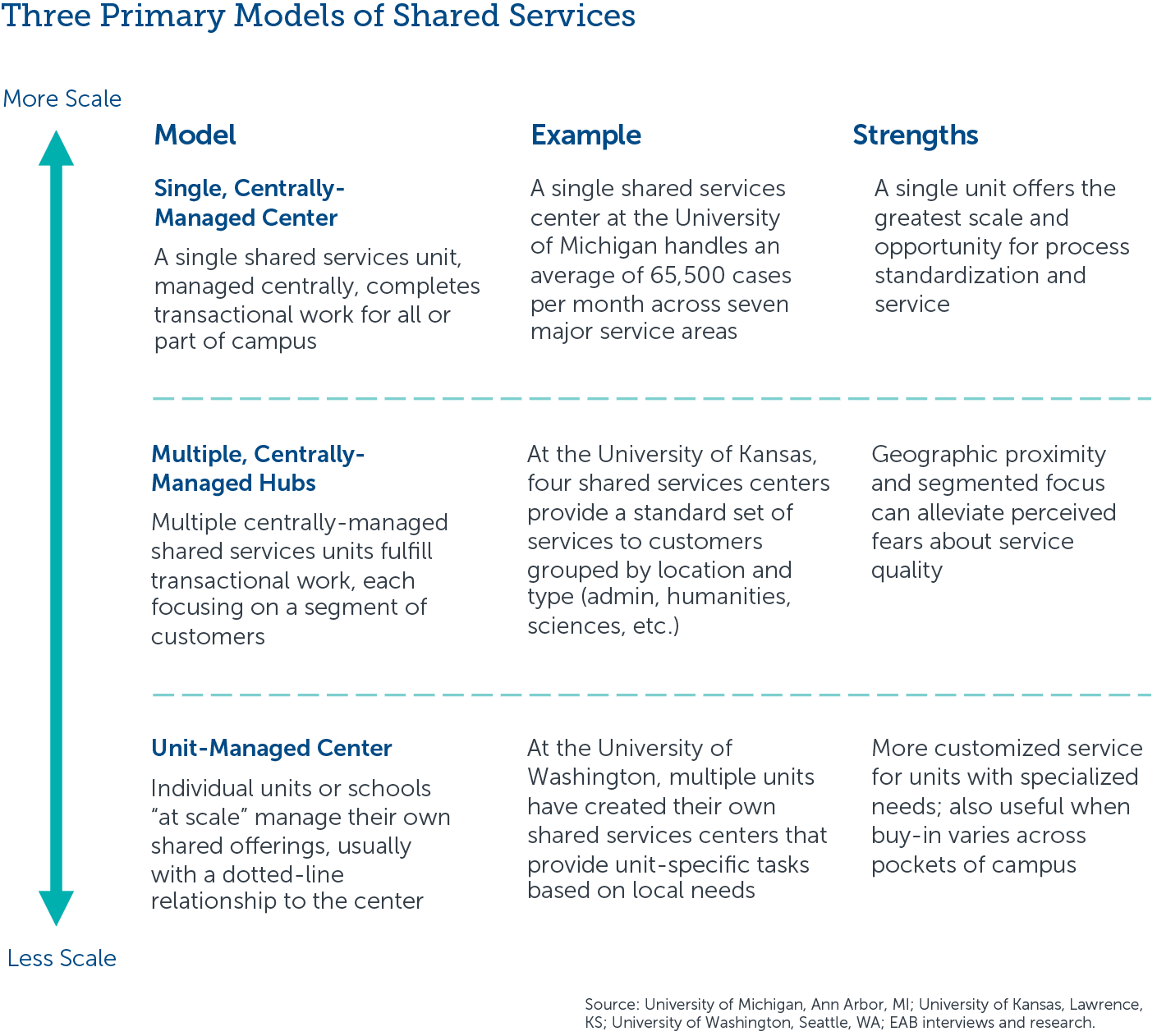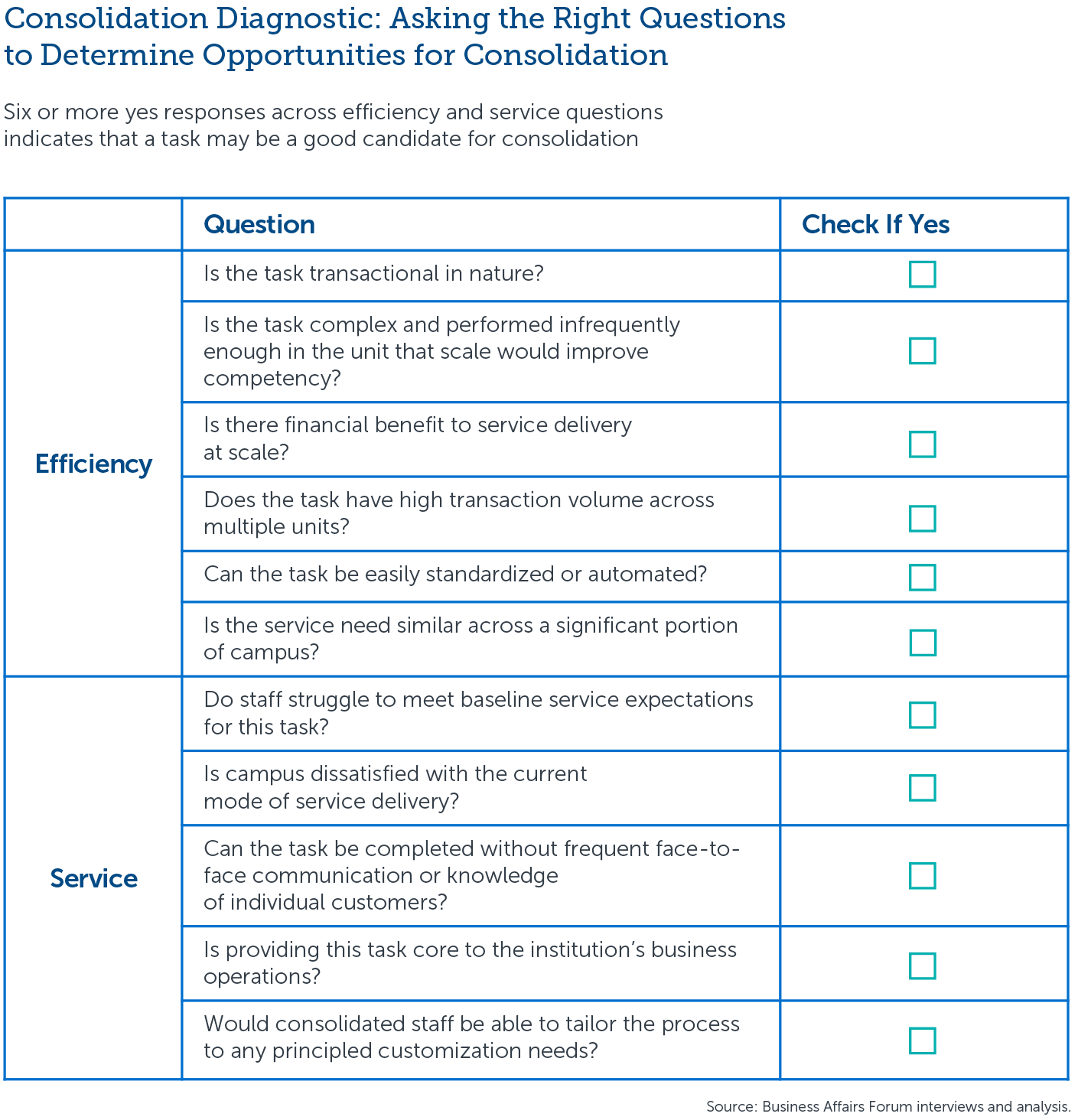Design a Shared Services Model That Reflects Campus Priorities
Shared services centers absorb administrative work from campus units to realize efficiency and quality improvements. Rather than adopting a one-size-fits-all model, institutions should create a shared services structure that strikes a balance between two factors: the efficiency of process standardization and responsiveness to units’ service expectations. This Roadmap addresses the four major design elements that affect this balance, all in the context of advancing campus priorities and goals.

Choose a best-fit shared services model
While there is no “one-size-fits-all” approach to designing a shared services model, most fall into one of three categories: single centrally-managed centers, multiple centrally-managed hubs, and unit-managed centers.
Several factors—including the number of services to be provided and the size of the customer base—will suggest the optimal model. But balancing efficiency and customer service is the most important factor to get right.


Determine which activities to consolidate
When launching a shared services initiative, it isn’t necessary to consolidate all administrative transactions immediately. Instead, begin with high-volume, high-frustration processes. Demonstrating the value of shared services for these processes, whether in terms of cost savings, efficiency, or customer satisfaction, can pave the way for further expansion.

Additional tools
Use the Shared Services Consolidation Diagnostic pictured below to determine which activities are prime candidates for shared services. The diagnostic assesses administrative tasks based on efficiency and service, the two main factors to consider when consolidating work into shared services.
It helps leaders answer the questions, “will providing this service at scale make the process more efficient,” and “will it improve–or at least maintain–service quality?” The activities that provide the best opportunities for shared services will have at least a few “yes” answers in each category.

Calculate shared services staffing needs
When transitioning to shared services, failing to deliver on customer service expectations can reinforce stakeholder skepticism about the model’s effectiveness. Oftentimes, this is a product of understaffing.
To ensure the new service centers are sufficiently staffed, institutions should perform an activity survey during the design phase. The survey is used to identify unit-based staff whose work portfolios include tasks associated with a transitioning function.


Adopt a sustainable funding model
A less complex (but no less important) decision concerns the funding of shared services. Some institutions bear all shared services costs centrally, rather than charging participating units any fees. While this approach requires an upfront central investment, it removes a major barrier to participation. Unit leaders who feel they are getting something “for free” are more likely to adopt shared services.
Otherwise, there are two models for funding shared services with the support of client funds: budget reallocation or fee assessment. Reallocation of budget lines—primarily in the form of staff that are reassigned to the shared services organization—is most common. Assessing a fee or chargeback can better reflect “true” costs of the service but can be more complicated to calculate and justify to customers.


Now that you've read the roadmap
- Learn how to ease the transition to shared services with a plan for common change management hurdles
- Review the many forms that shared services can take in the Compendium of Shared Services Profiles
- Take the shared services readiness assessment to get a full picture of factors that go into successful implementations

This resource requires EAB partnership access to view.
Access the roadmap
Learn how you can get access to this resource as well as hands-on support from our experts through Strategic Advisory Services.
Learn More